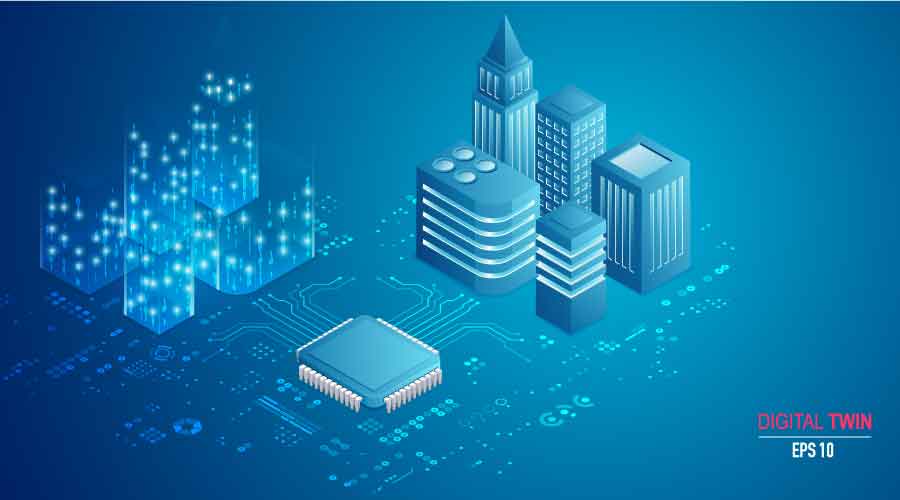How Digital Twins Can Create Facility Management Efficiencies
Breaking down siloes of data and systems, and tying them together creates a huge opportunity for FM efficiency. Here’s what you need to know about digital twins implementation.
By Greg Zimmerman, senior contributing editor
For many years now, facility managers have been hearing that Building Information Modeling (BIM) might just be the future of facility management. A computer model of a building as it was originally designed could act as an electronic as-built model, replacing the antiquated paper print-outs created from CAD. Facility managers could then use this computer model in a variety of ways for operations.
Many FMs jumped on the bandwagon and were able to create operational efficiencies shoehorning BIM into facility management. A 2016 FacilitiesNet.com story made a strong case for why FMs should consider BIM for facility management. But using BIM for FM was a lot of work. The model had to be constantly updated and attention paid to each asset described in the model.
The issue with all the enthusiasm about using BIM for facility management is that BIM was never intended to be a facility management tool. It’s a design tool. Yes, by incorporating facility data into a model, FMs could create a system that in some ways mimicked an asset management system, and could plan and executive prevent maintenance and other operations from there. But again, that was never the goal for BIM.
“BIM is a siloed tool, and never really created very well to be used by multiple parties or multiple data points,” says Jacob D’Albora, director of digital building operations for VIATechnik, a digital technology consulting firm. “BIM is really a tool to get design and construction done better.”
And since a building changes every single day, facility managers need a tool to change with it, D’Albora adds.
For that reason, the conversation around BIM for facility management is shifting. A relatively new strategy called digital twins technology is moving into the mainstream and offering facility managers a whole range of capabilities to optimize operations.
What is Digital Twin?
The definition of a digital twin is fairly similar to that of a BIM: It’s a digital copy of all the building systems.
According to Mehdi Nourbakhsh, CEO of YegaTech, a digital twin has three parts:
1. a physical asset,
2. a digital asset (which is the replica of the physical asset),
3. a live digital thread between the physical and digital asset via data.
That third part is what is most beneficial for facility management, as digital twins go several steps further than a design model and allow previously compartmentalized data sets and systems to interact with each other. That's to say, a digital twin is much more sophisticated and has much more value for building operations. The smarter a building, the more opportunity for digital twins to optimize operations. Digital twins can and often do incorporate artificial intelligence to tweak systems to improve efficiency, something a BIM can’t do.
Benefits of Digital Twins
One of the biggest advantages of digital twins compared with BIM is interoperability.
“We use digital twins as a platform that sits atop facility management databases and software, and we use the digital twin to control and analyze data,” says D’Albora. “A CMMS and BAS have a common-ground platform without having to tie them directly together.”
In the past, tying these disparate systems together was possible, but difficult. An expensive systems integrator was usually required.
While a technology consultant is still usually required to implement digital twins, the process isn’t nearly as harrowing as trying to integrate dozens of disparate systems used to be.
“APIs at the backends of systems are a must now. This is a huge step forward in technology,” says D’Albora.
And that just improves how well systems can talk to each other and how integrated facility management processes can be. Several open source initiatives, like Project Haystack, are working to make digital twins even more flexible in how systems can talk to each other, share data, and optimize efficiency.
Overall, the most impact benefit for facility management of digital twins is optimizing efficiency, and therefore, saving money. As facility managers sit down to plan digital twins initiatives and implementation strategies, efficiency, both in terms of utilities but also in operations, should be the end goal and never too far out of mind. When building systems and data are tied together, digital twins become essentially a platform for continuous commissioning.
“By capturing and synchronizing data at a specified frequency and fidelity from various sources, you can visualize how your building has been performing, what is happening now, and what may happen in the future,” says Nourbakhsh. “You can use digital twins to break siloes in your projects. You can leverage it to convert your data to knowledge and support transforming the knowledge from one project to another.”
Implementing Digital Twins
Nourbakhsh offers a four-step plan for facility managers interested in wading into digital twins technology.
- Educate yourself and your organization about digital twin and what business values it can bring to your company.
- Form a small team to identify various use cases of digital twin that have the highest return of investment for your company.
- Experiment on quick-win projects. Learn and experiment more to optimize your processes, invent a new one, and change the way you used to work.
- Share what you learned, inside and outside of your company.
Implementing digital twins technology has the hallmark of a strategy with which facility managers are familiar: More time spent on the front end of a project yields time and money saved on an ongoing basis.
“Don’t think of a digital twins project as an uphill climb,” says D’Albora. “The justification of the project is decreasing costs overall. It’s a huge opportunity.”
Greg Zimmerman is senior contributing editor for the facility group, which includes FacilitiesNet.com and Building Operating Management magazine. He has more than 18 years of experience covering facility issues.
Related Topics:









